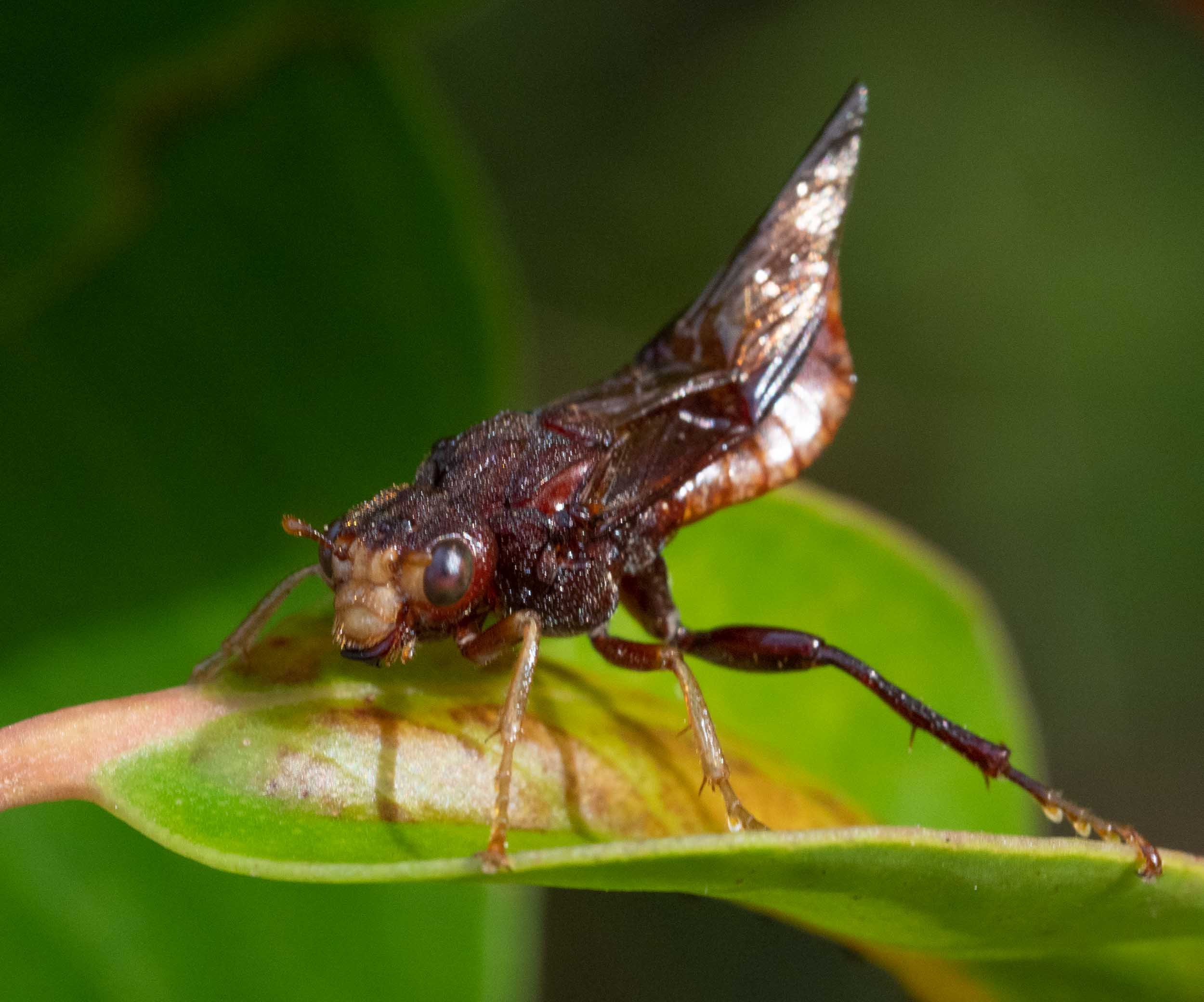
16th Feb, 4:30pm: She stood propped on the upper surface of the leaf, grasping its edges in her claws and completely motionless. Her abdomen was flexed upwards. How did I know this was a female? - read on!

The mid-rib of the leaf on which she was standing showed a prominent thickening. I knew from previous reading that this must be the site where she had deposited a clutch of eggs.
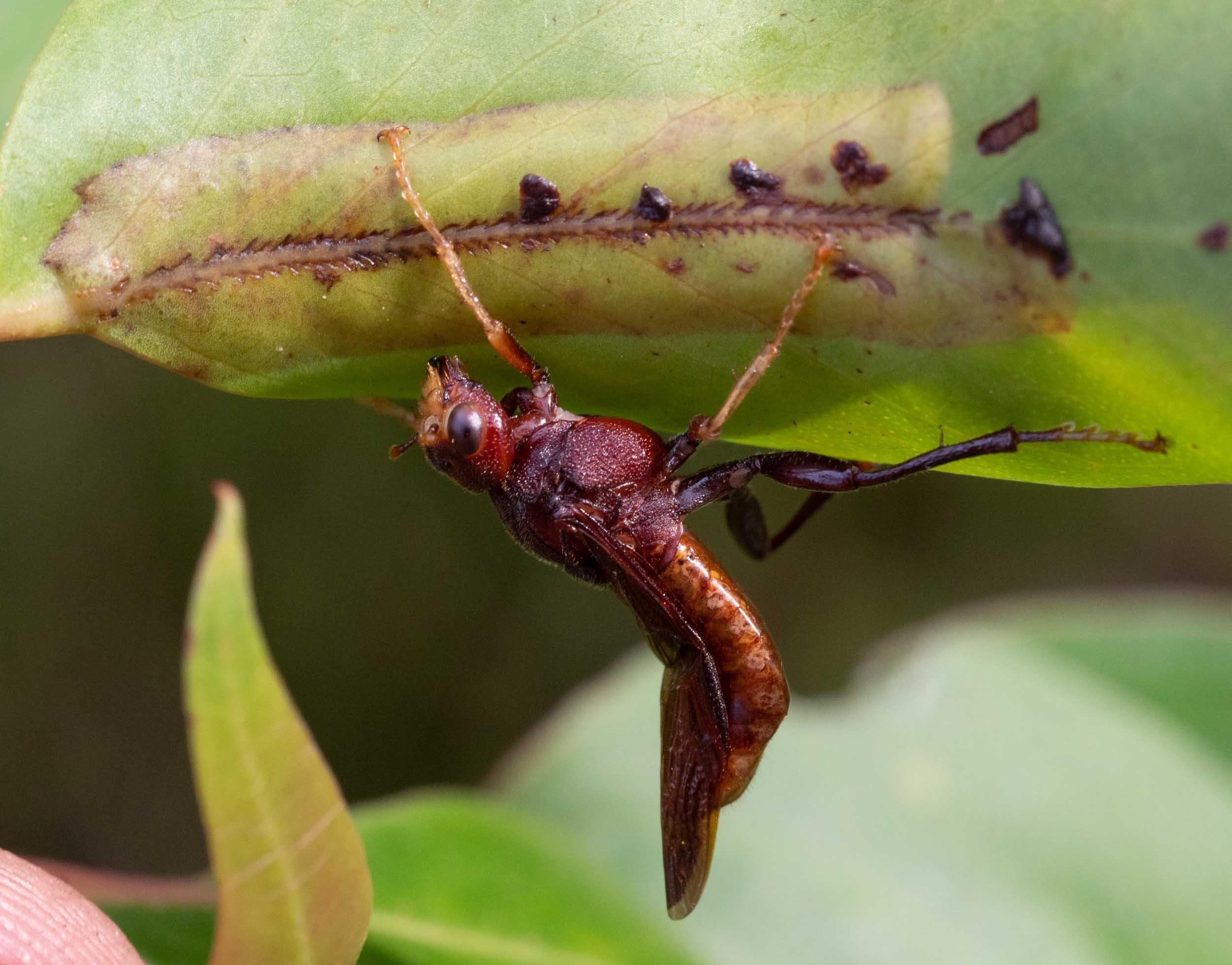
When I turned the leaf over, she moved to its underside, protectively placing herself between me and her precious egg cluster. Each edge of the mid-rib was marked by a row of oblique, dark red slashes. These were made by the saw on her ovipositor, as she injected her eggs into the interior of the leaf. Read more about this clever instrument in section 5. “How sawflies get their name” of my post Six Things About Sawflies.
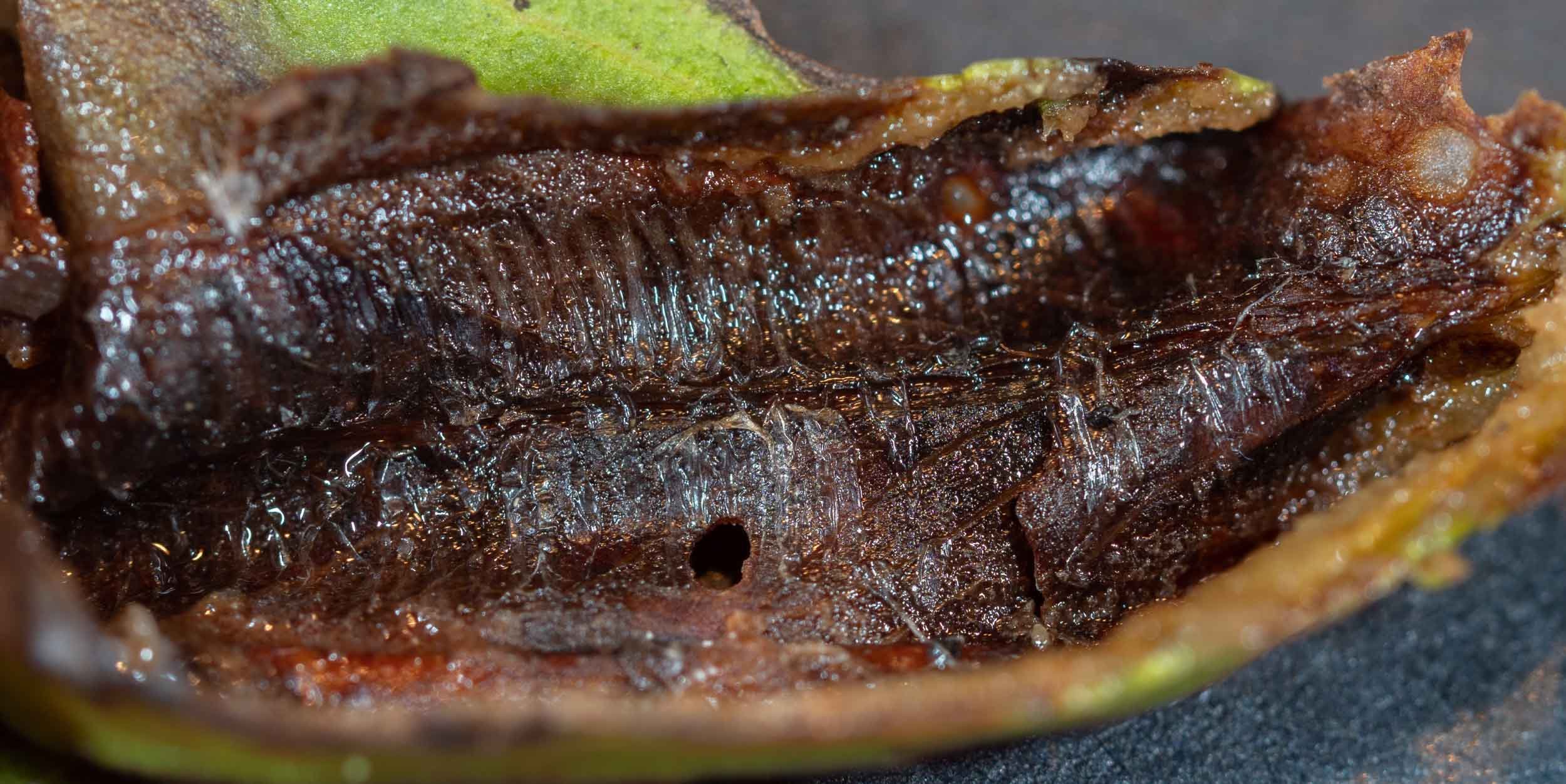
I cut open the leaf 2 weeks later, after all the action had passed. This revealed two rows of shallow depressions, spaced about 1mm apart, perpendicular to the leaf mid-rib. Each of these was a chamber for one of her eggs. I estimate there are over 50 of these.

24th Feb, 10:22am: 8 days after I first noticed the egg clutch, a knot of tiny larvae made an appearance.

The larvae had already eaten a notch from the edge of the leaf. I counted around 30 little black heads.
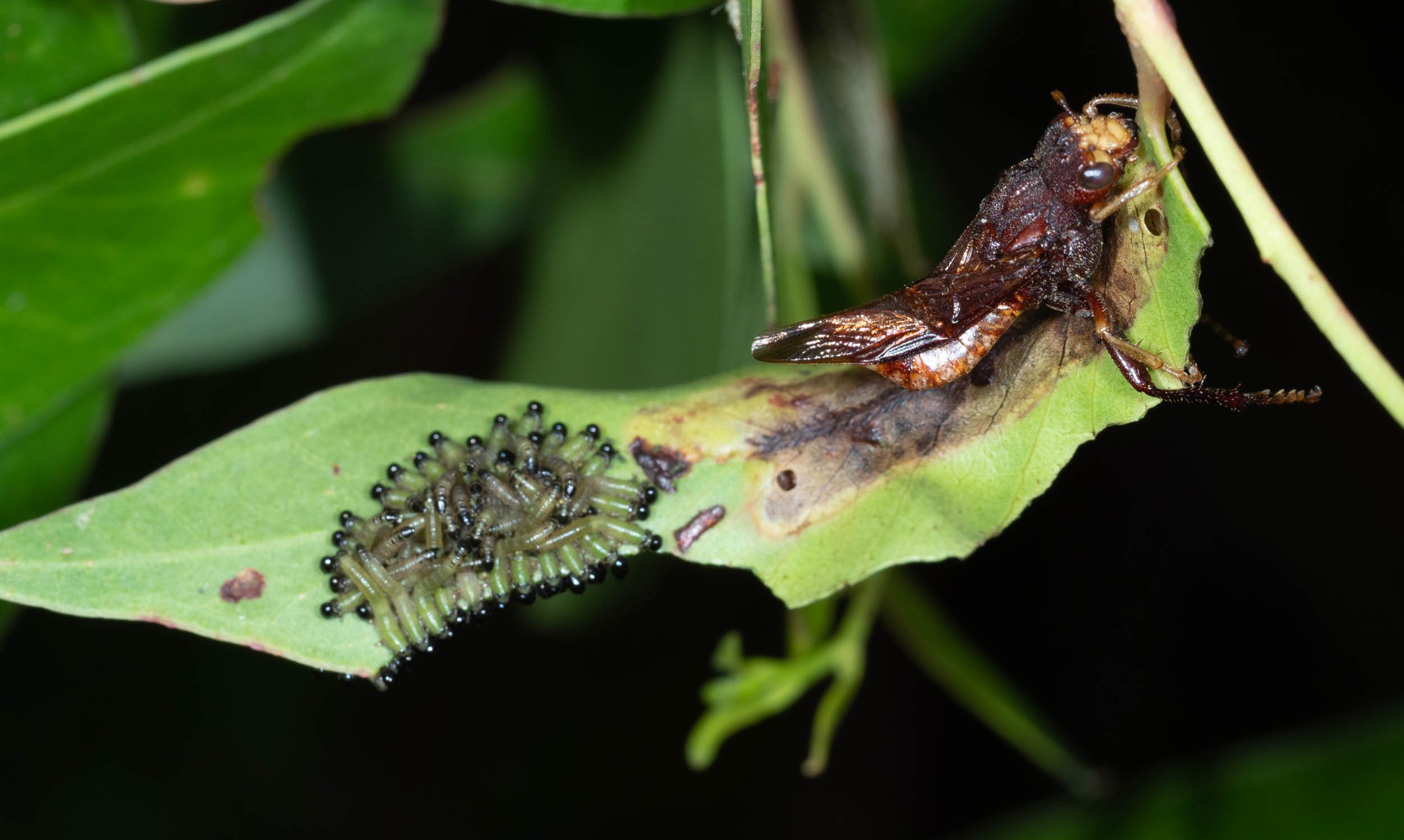
25th Feb, 9:50am: When I checked the next day, the number of larvae had doubled. So eggs had continued to hatch overnight. You can see two of the holes in the surface of the leaf where the larvae had made their escape from the egg chamber. The chunk in the edge of the leaf has got noticeably larger! The larvae are often seen feeding during the day.
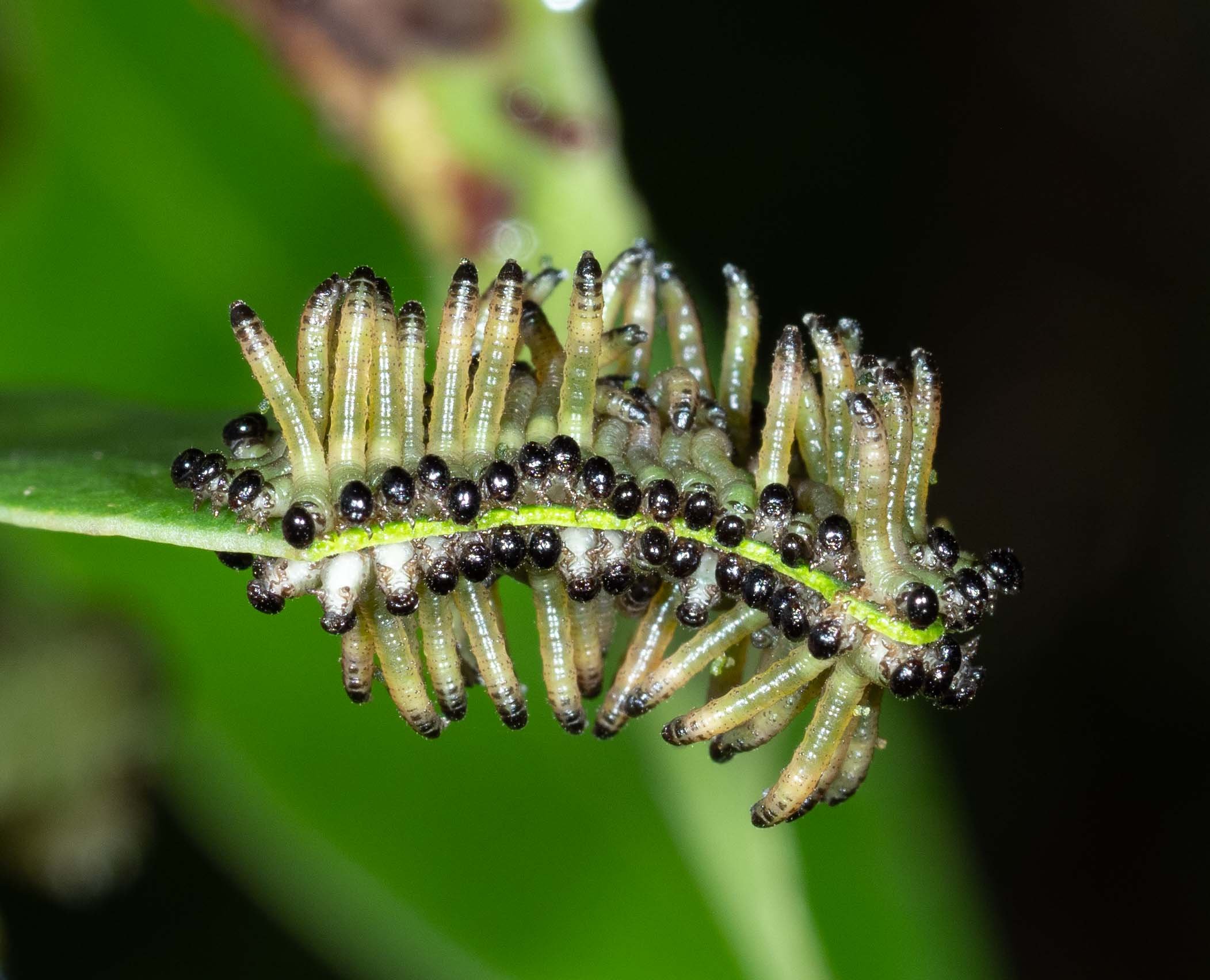
26th Feb, 8:33am: The larvae have moved on to a new leaf. They’ve spread out to both sides to provide space for all. They are very responsive, lifting their abdomens in threat when I venture too close.

26th Feb, 8:34am: The mother has now moved from her clutch onto a branch about 30cm away. She disappeared the following day. Her maternal duties discharged, she probably died soon after.

26th Feb, 5:02pm: The Pseudoperga larvae are having to share their leaf with an intruder - a much larger (and older) Lophyrotoma larva.

28th Feb, 8:42am: Time to move to a new leaf!
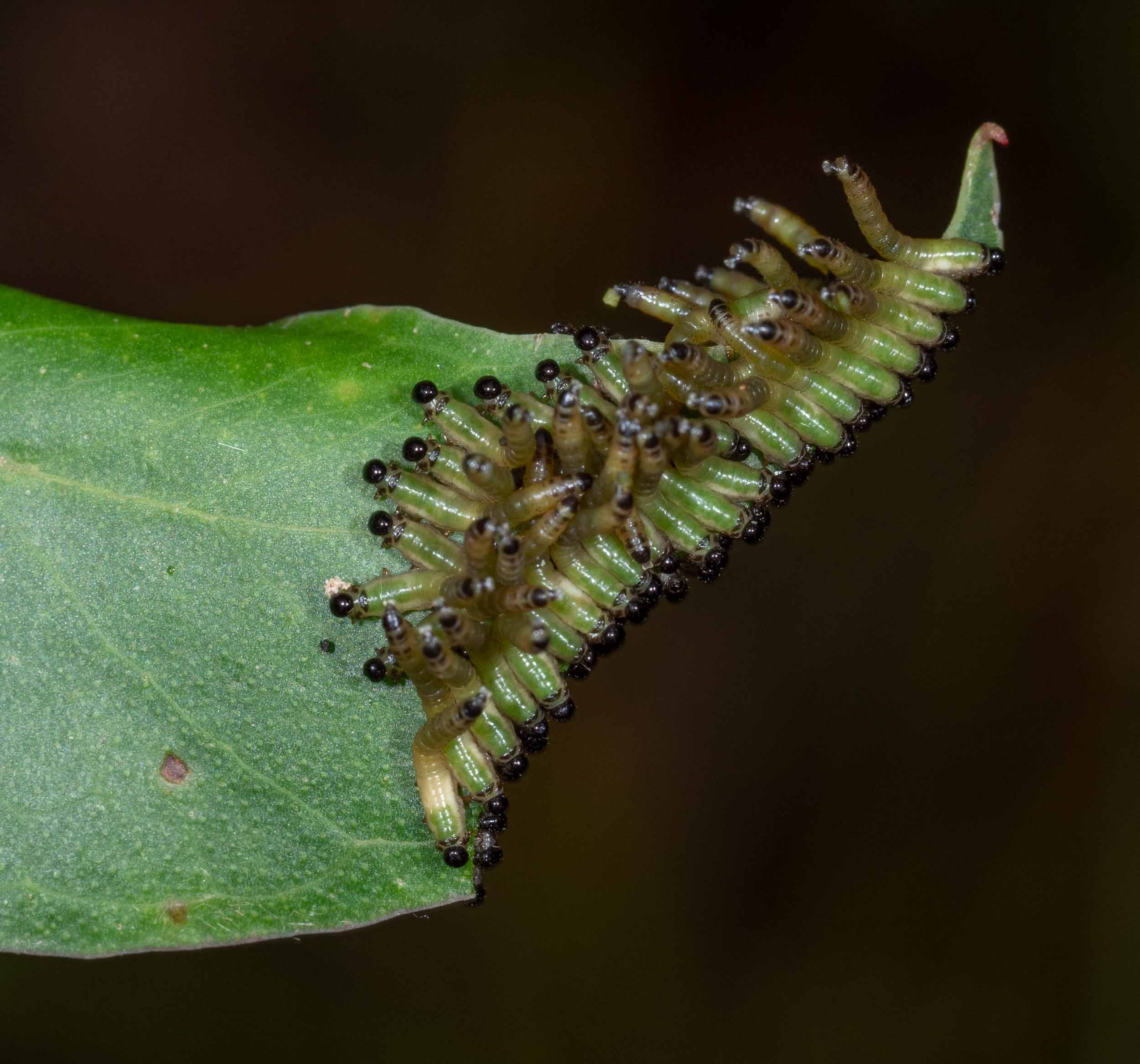
2nd March, 10:35am: They’re making a quick job of this one!

Attack from all sides!
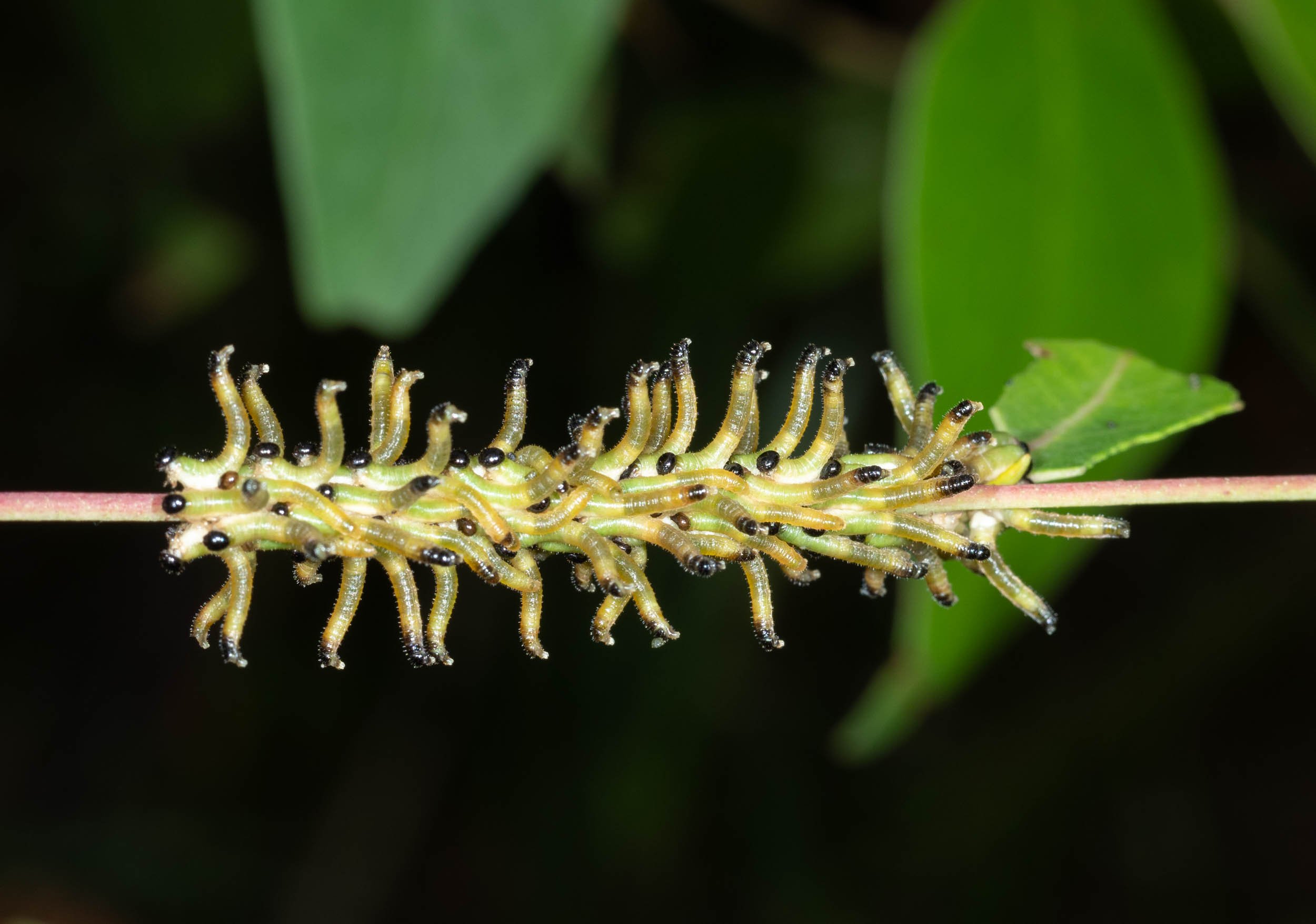
28th Feb, 8:44am: I noticed a different cluster of Pseudoperga larvae on a branch about half a metre away from the first clutch. They appeared to be as old, if not older than the first lot of larvae. So I must have overlooked them when I sighted that first clutch. They’re doing the familiar threat display. But where is their mother?

28th Feb, 8:46am: It didn’t take too long to find her. She was parked on a branch about 20cm away, keeping a watchful eye on her clutch. She had presumably behaved like the mother of the other clutch, parking herself over them until the eggs hatched.
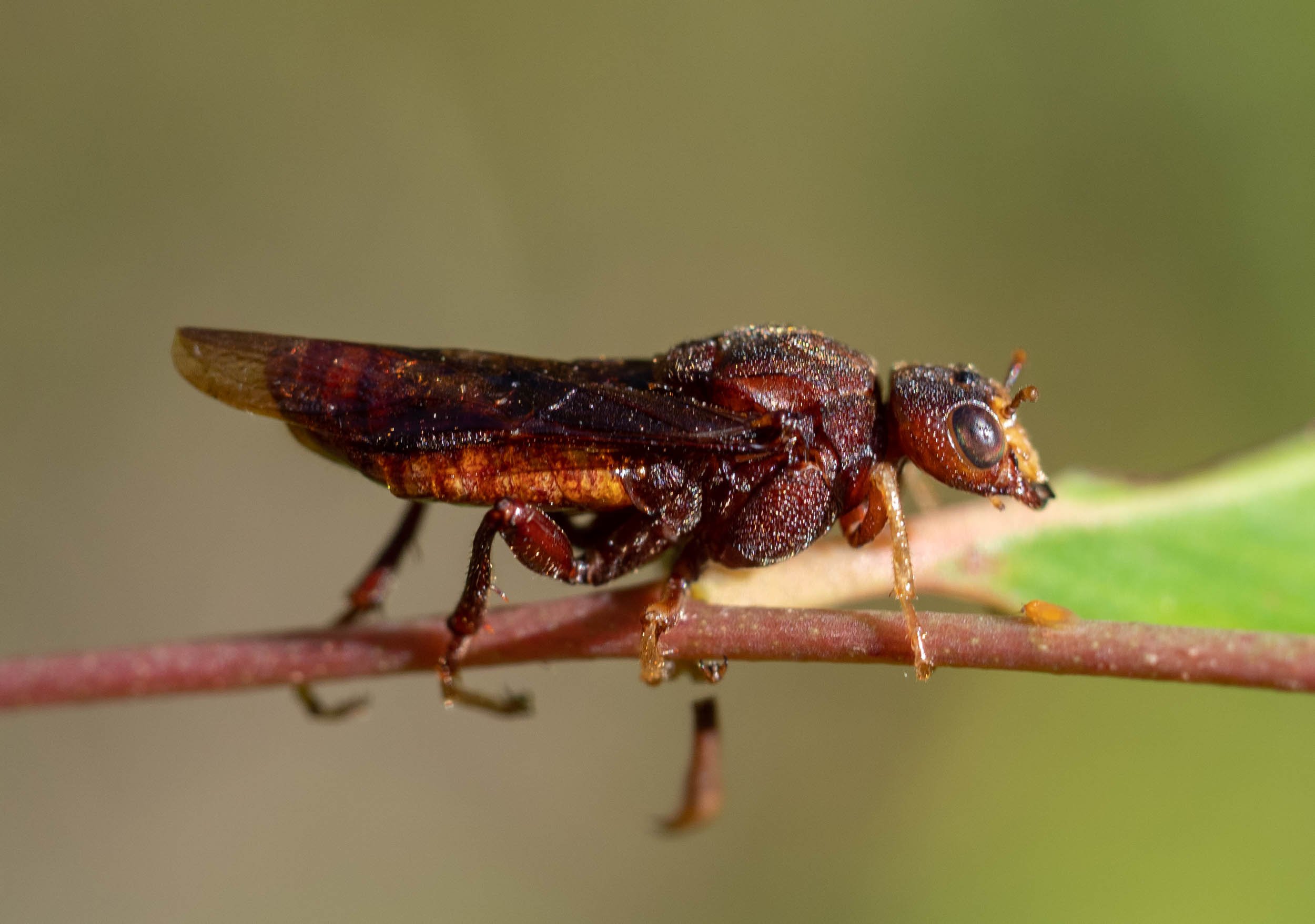
Here’s a profile view of the beauty.
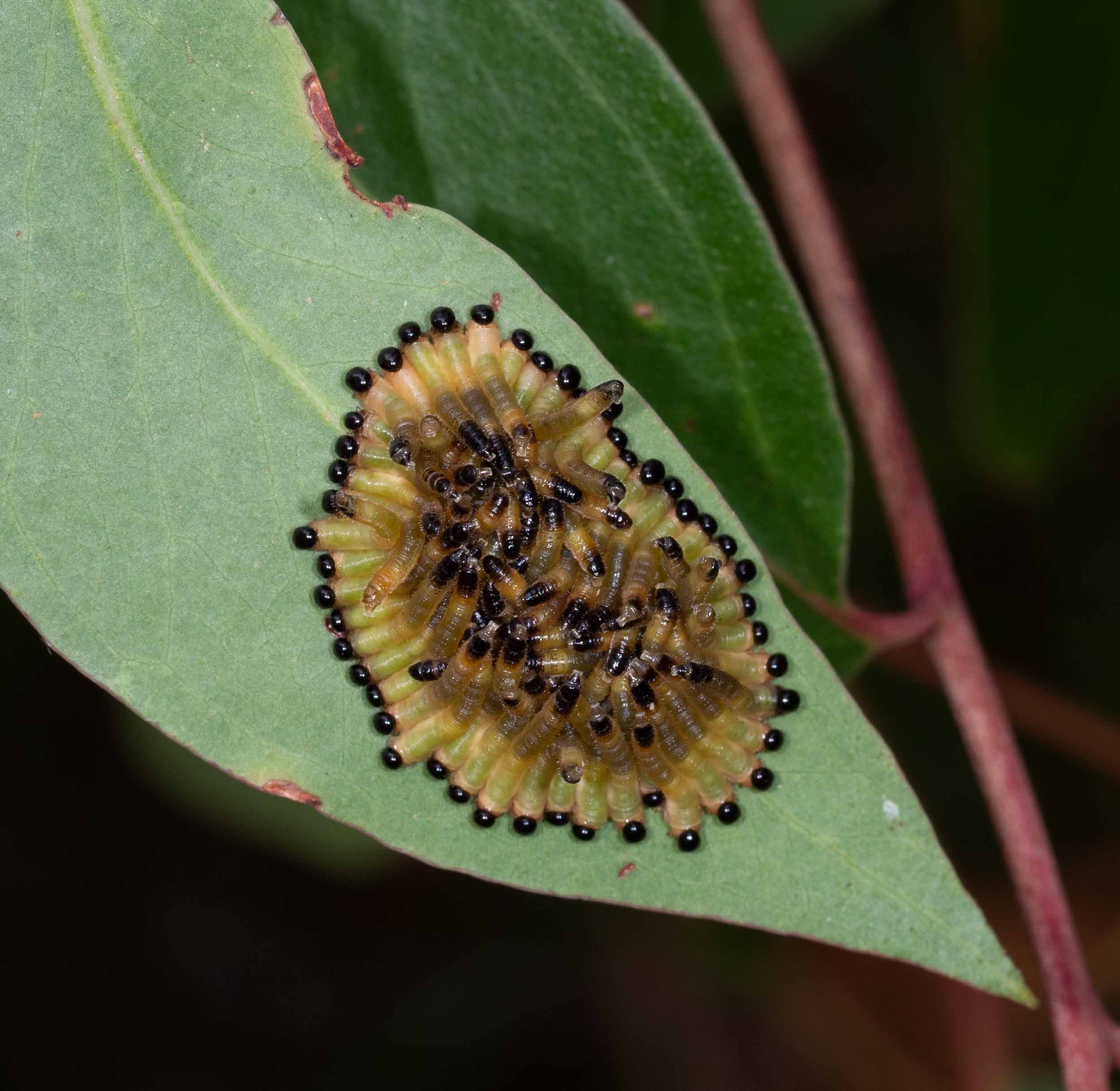
28th Feb, 12:47pm: The larvae gather in a circle with their heads facing the circumference. They had apparently just moved to this leaf as 4 hours earlier they were migrating along a branch leading towards it. They haven’t begun to feed. Unlike the other clutch of Pseudoperga larvae, these appear to feed only at night. During the day, they are always seen in a cluster like this in the middle of a leaf.

28th Feb, 12:47pm: A side on view of the same clutch
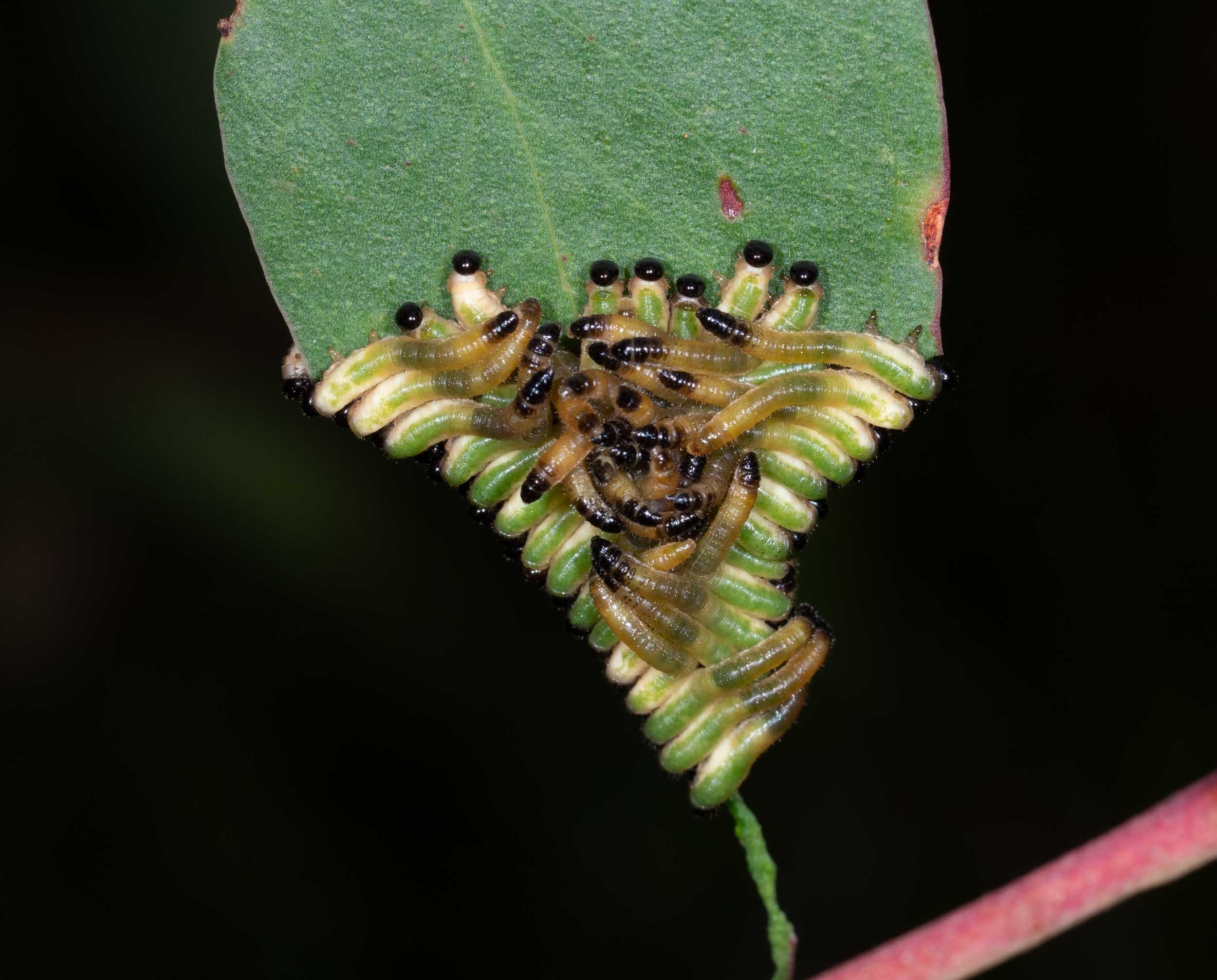
28th Feb, 6:40pm: The clutch has begun to feed now that night approaches.

13th Jan, 5:01pm: the larvae have started on a new leaf, moving back from its tip in a row. They devour almost all of the leaf cells, leaving only the vascular tissue.
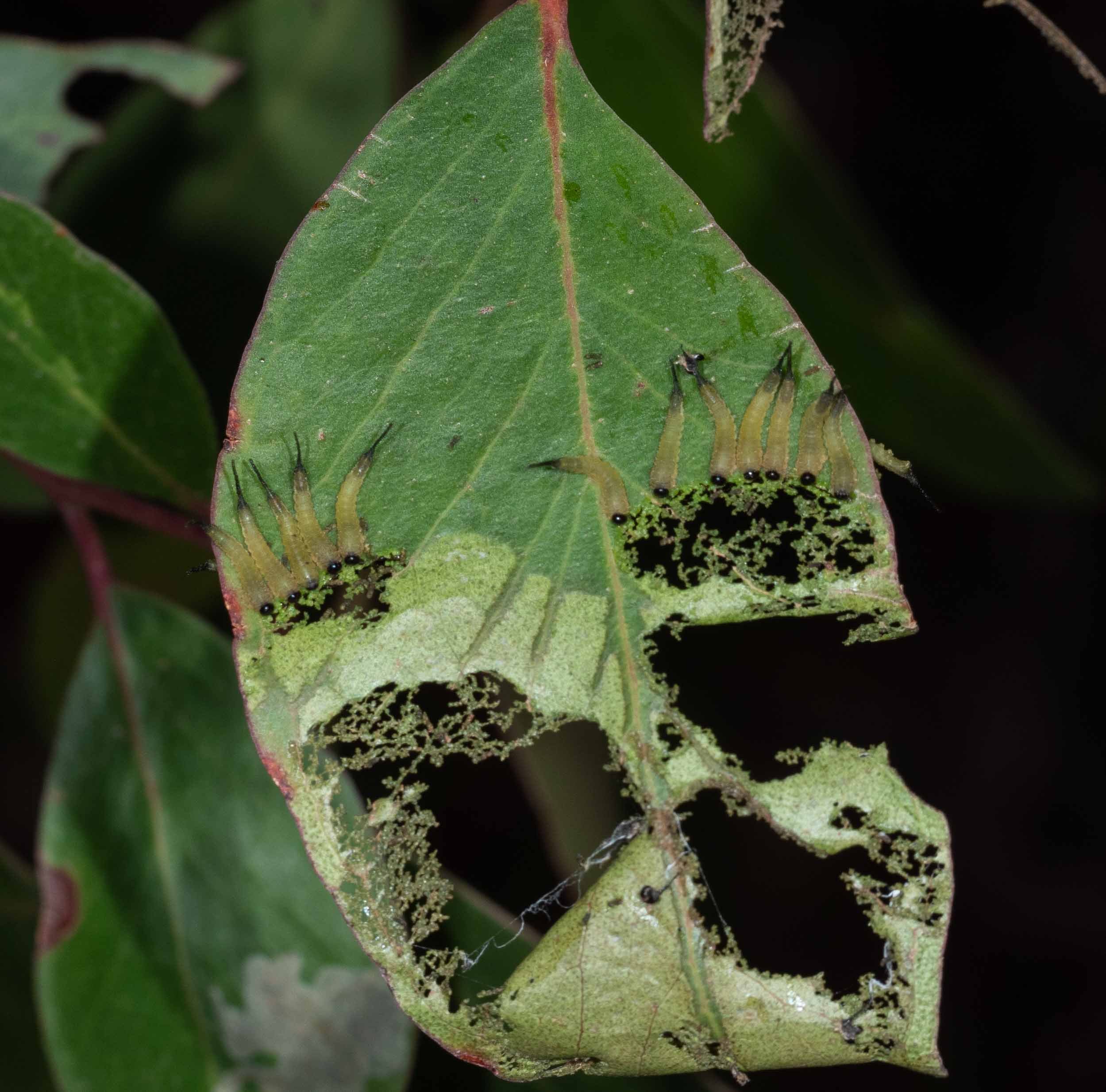
14th Jan, 7:50pm: the group has progressed further back, leaving a wasteland on the leaf.
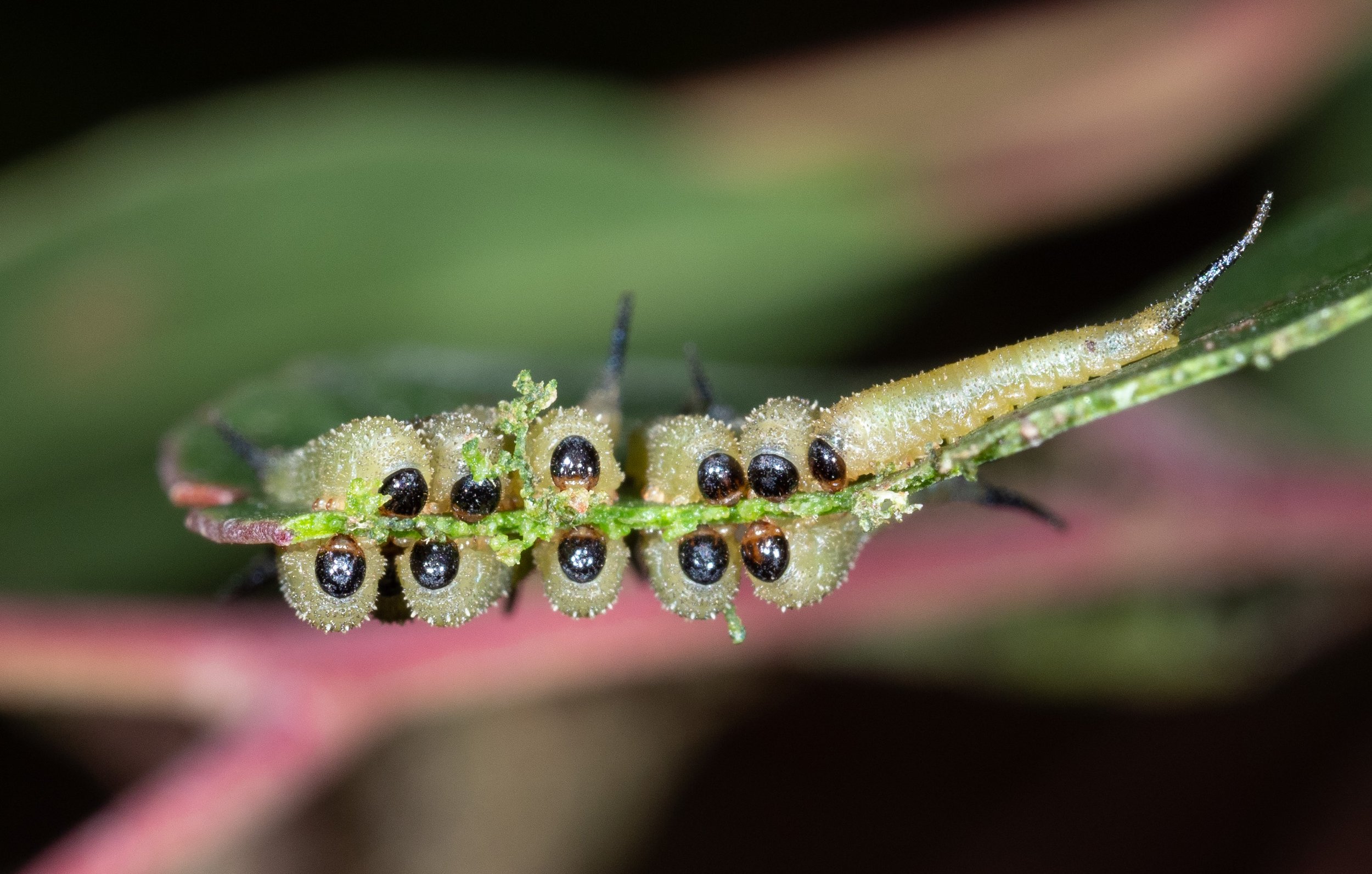
18th Jan, 9:15am: A side-on view shows how the larvae attack the leaf.
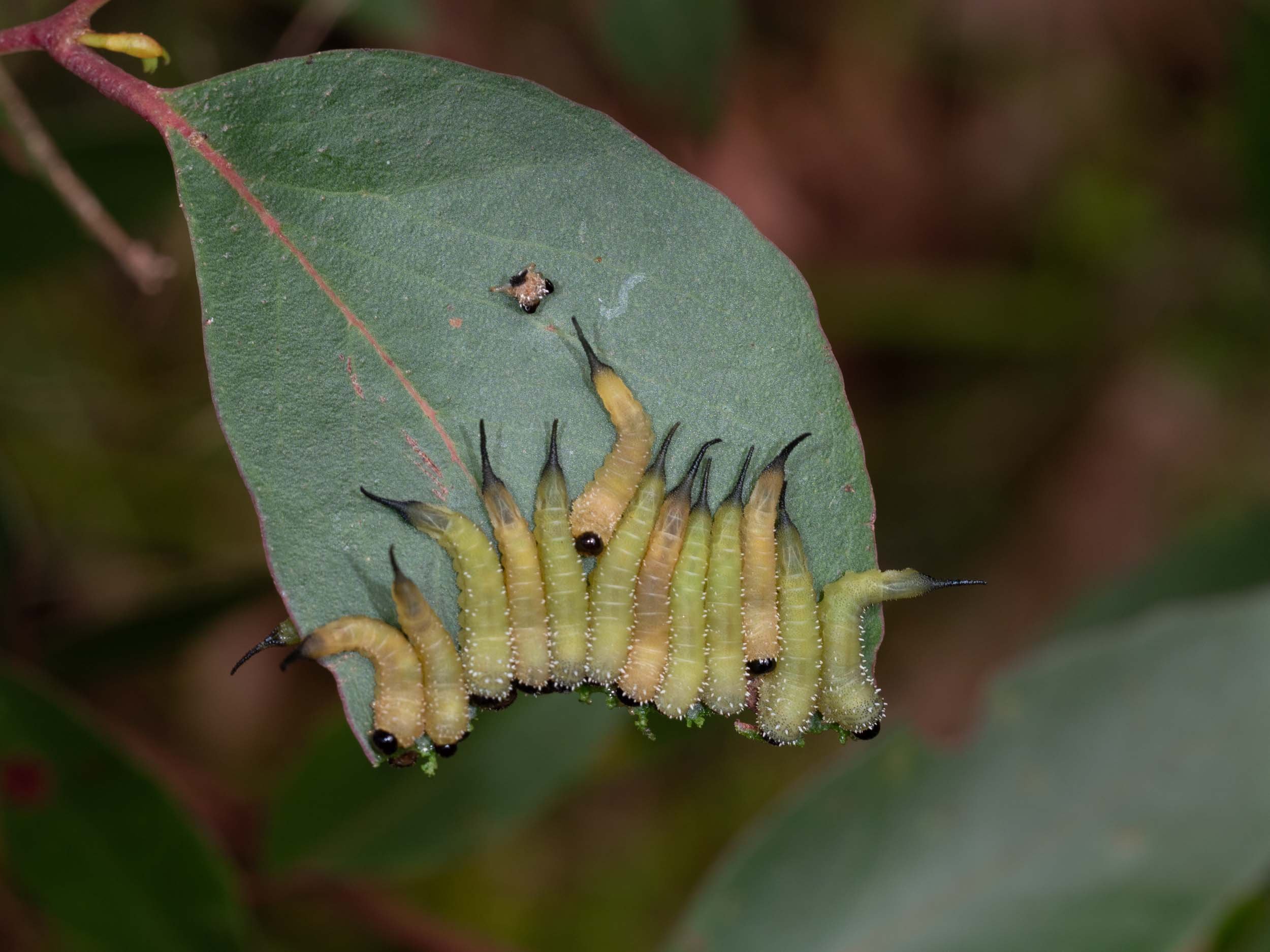
2nd Feb, 9:51am: A fortnight on, the larvae have grown substantially. They discard their old skins (one seen behind the group) every time they moult. They now possess white nipples around the perimeter of their body, but are otherwise little changed in appearance. We see them feeding both day and night.
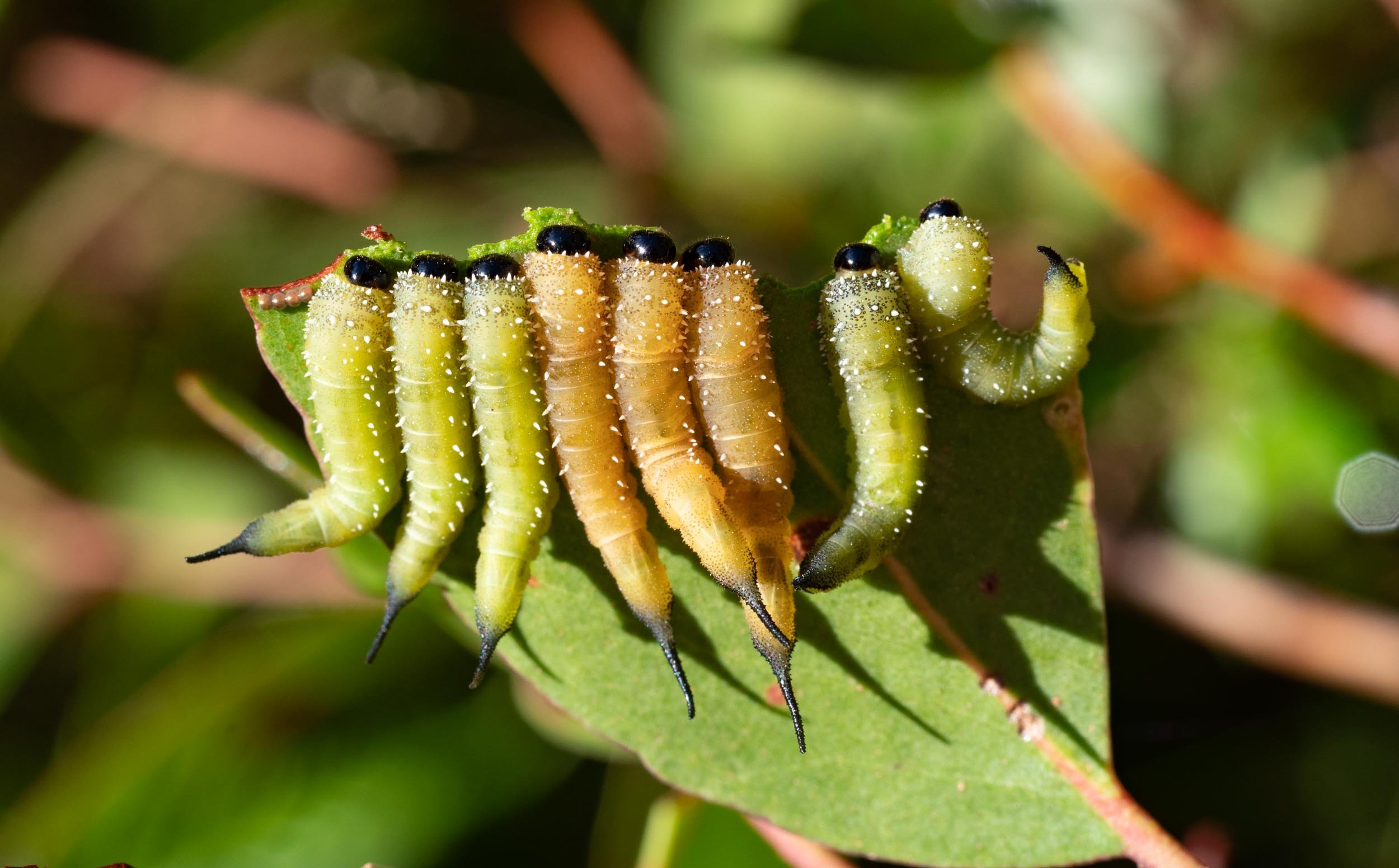
10th Feb, 9:08am: Still feeding and still growing! There’s not enough room on a single leaf for the whole cohort now. So they split up into separate feeding groups.
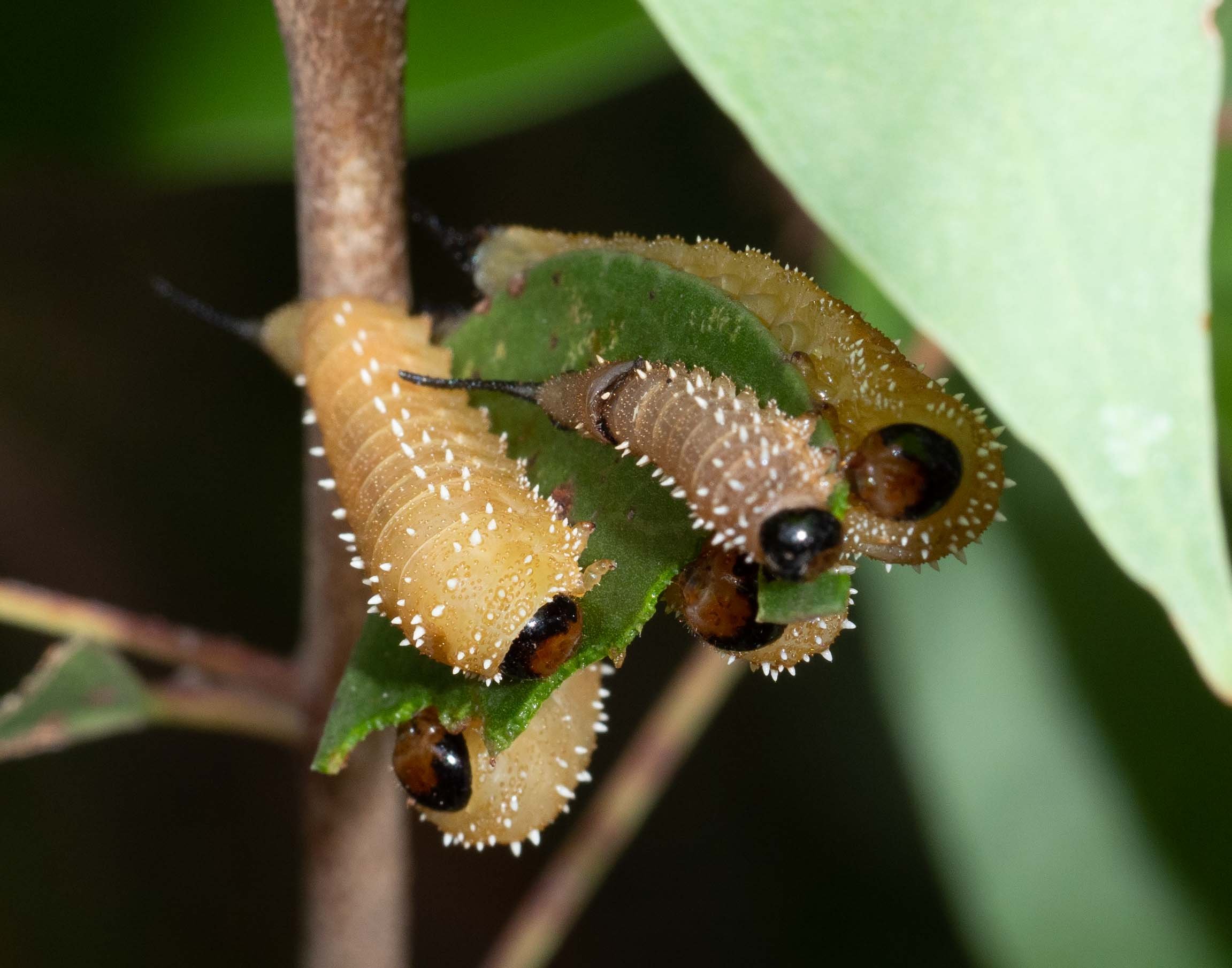
2nd March, 10:37am: The larvae are now so large that there is only room for 2-3 on each side of a leaf. Leaves are disappearing fast, so the cohort has spread out over the bush to gain access to fresh food.

22nd Feb, 2:19am: A new clutch of young Lophyrotoma larvae has appeared on the bush - some distance away from the original clutch. While I haven’t seen Lophyrotoma adults for months, adults must have been around the place recently to make these larvae.
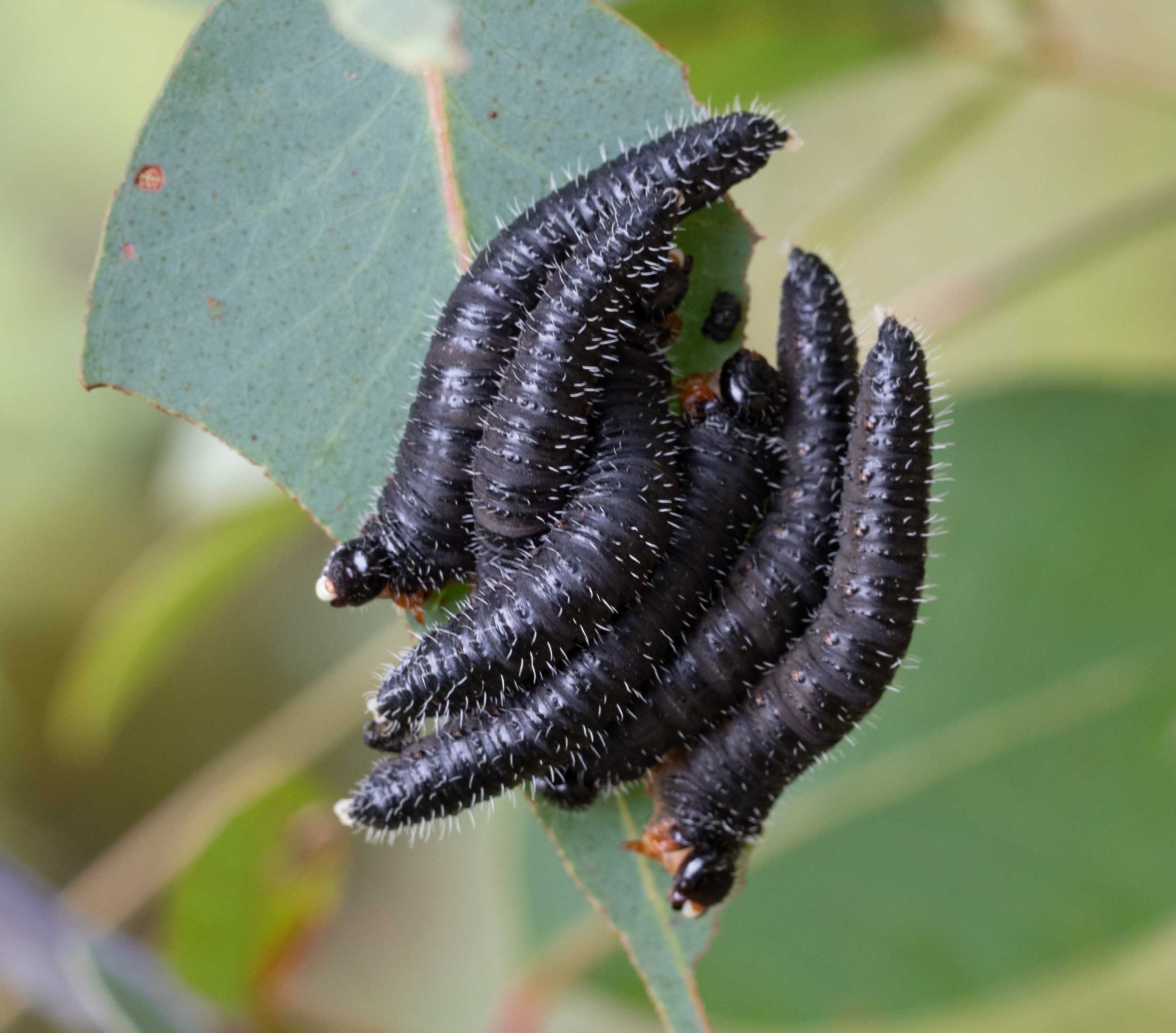
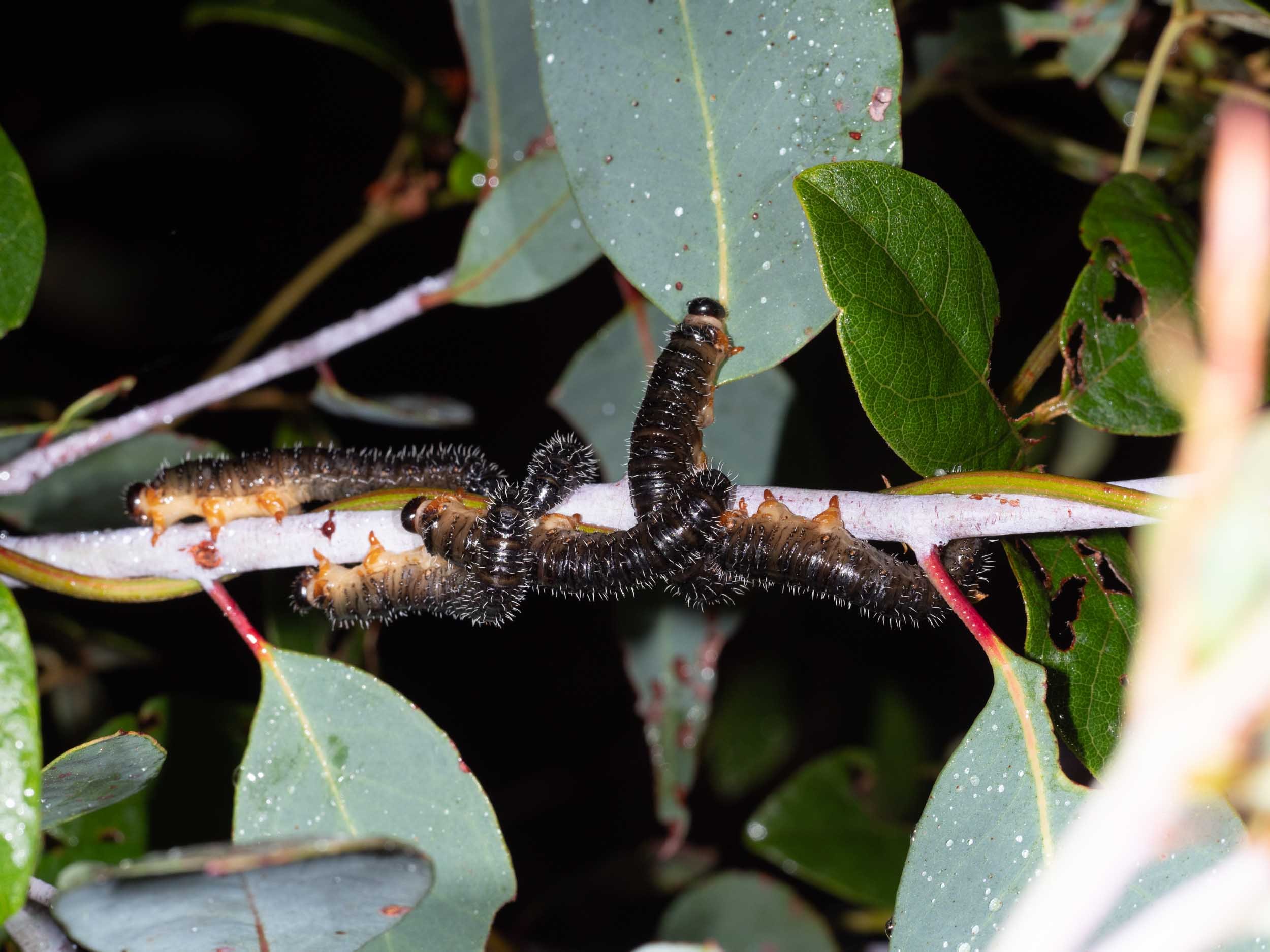
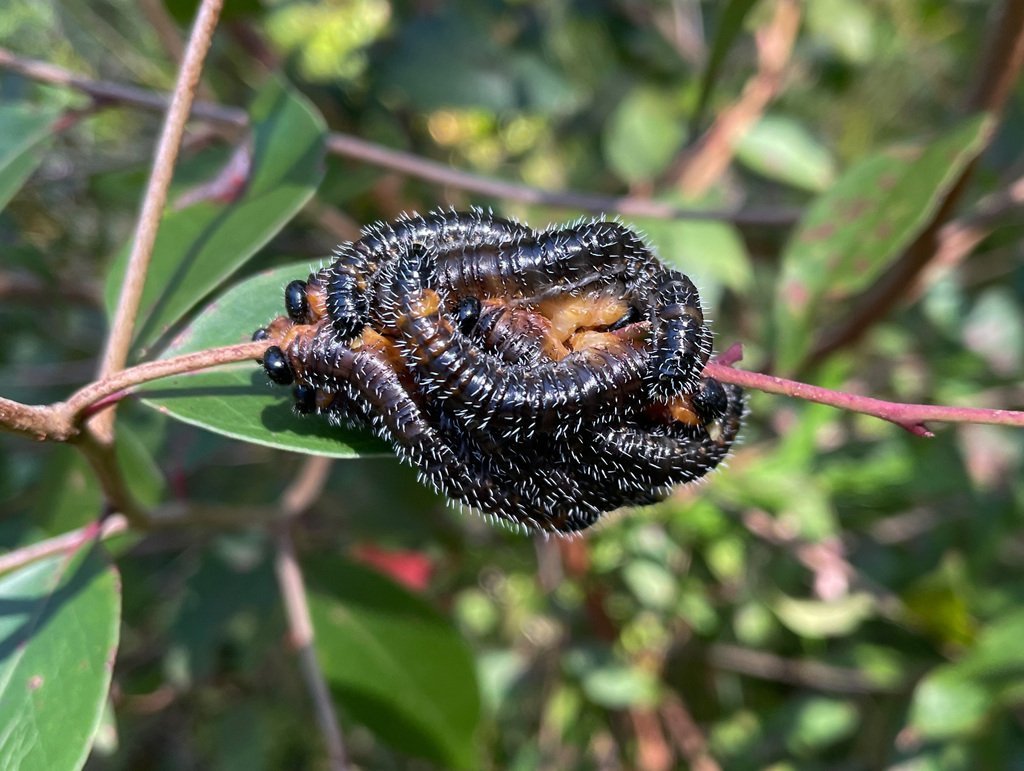
11:30am The whole group resting in a cluster on a bare stem of the sapling
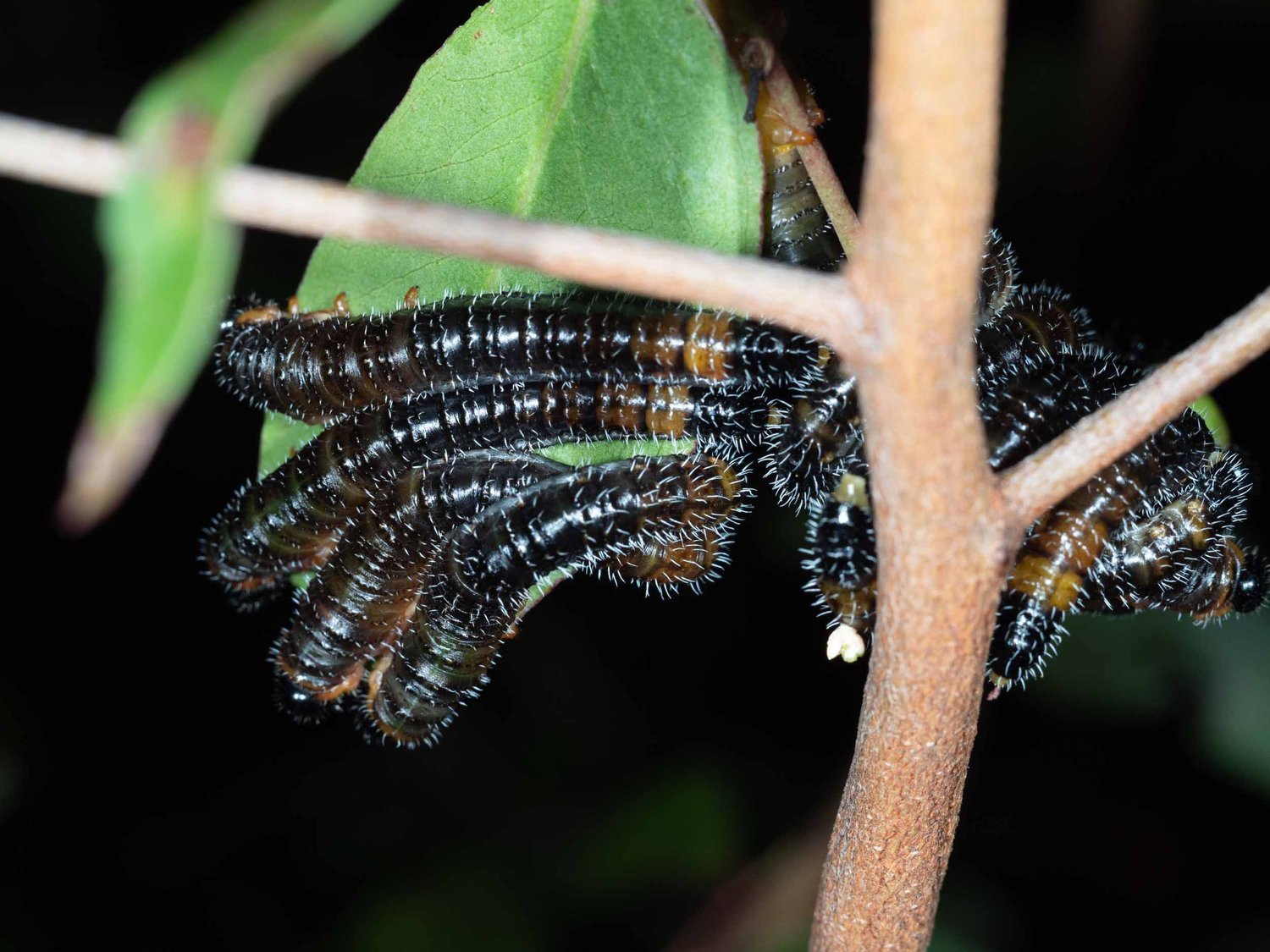
8:46pm Half of the group feeding on this leaf

8:45pm the rest of the cluster is feeding nearby































